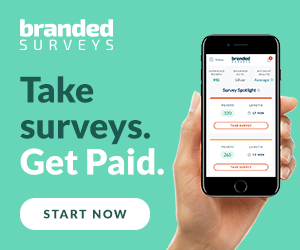In recent years, technology has revolutionized the different types of banks available to consumers. Whether you want to do your banking entirely online or play it old-school and bank in person, choosing a bank is a big decision that will undoubtedly follow you for several years.
That being said, there are a few different tips to consider when deciding which bank to do business with. Not all banks are the same. This article will discuss the different types of banks and how to choose a bank according to your personal needs. So, if you are in the midst of picking out a bank, you’re in the right place. Keep reading!
Understanding the Different Bank Types
Nowadays, there are three main types of banks: traditional banks, credit unions, and online-only banks. Below, we will discuss the pros and cons of each bank and why it may be beneficial to choose them based on your individual needs. While traditional banks may be the option you are most familiar with, it does not always mean they are the best option!
Traditional Banks
Traditional banks are by far the most common and typically the most prominent type of financial institution. You can probably think of many conventional banks off the top of your head: Bank of America, Chase, Wells Fargo, and more.
One of the pros of choosing a traditional bank is that it typically has many physical locations for you to take out cash and make deposits when needed. Additionally, these banks usually have an extensive portfolio and offer a wide range of checking and savings accounts to choose from.
However, there are also some cons to choosing conventional banking. Due to their size, customer service may be a bit impersonal. And often, larger banks tend to have more hidden fees.
Credit Unions
Credit unions are similar to traditional banks in practice, but they have one major fundamental difference: they are member-owned nonprofits. Therefore, when the credit union is doing well financially, so are its members!
Dividends are one of the significant pros of credit unions, meaning that members actually receive a split of profits (a dividend) when the bank is doing well at the end of the year. Additionally, members can vote on board elections as to whether or not their money is being used effectively.
However, credit unions tend to have fewer locations than traditional banks, meaning you may have to travel further to find a physical branch. Also, they sometimes (although not always) have outdated technology. So using their mobile apps and websites can be frustrating.
Online-Only Banks (Virtual Banking)
Virtual banks are what many people are turning to in 2023, especially for the best online savings accounts. Capital One is probably the virtual bank you’re most familiar with, and it’s also one of the most popular. But there are many others, including Discover, Ally, and Varo. Additionally, there are online credit unions such as Alliant.
One perk of virtual baking is that you can access your bank 24 hours a day, seven days a week. There’s also a lot of flexibility when it comes to opening new accounts and moving your money between them. However, online-only banks typically don’t have ATMs or physical locations. So you can’t always take out cash when you need it. And when you do, you will almost always have to pay ATM fees with different providers.
Choosing a Bank According to Your Needs
Now that we’ve discussed the different kinds of banks and their pros and cons, we can talk about how to choose a bank based on your own needs. Of course, you can use many different factors to decide on a bank, but below are six of the most popular and best measures for choosing the best one for you. Then, after verifying the bank’s security, identifying branch locations, and checking out the mobile apps, you can confidently decide on a bank.
Verify the Bank’s Security
Verifying your bank’s security ensures that your money will be protected in case of incidents like online hacking or theft. For the most part, banks are insured and protected through the FDIC (Federal Deposit Insurance Corporation), while most credit unions are covered by the NCUA (National Credit Union Association). However, it isn’t safe to assume that every bank is FDIC-insured. So be sure to do your research and determine whether or not your institution is covered by one of these policies. In general, that means the institution will protect your money up to $250,000.
Read Online Reviews
By visiting websites like TrustPilot or NerdWallet, you can read genuine customer reviews of various banks to determine what people actually think of them. While some banks might put glowing testimonials on their sites, they may not accurately reflect how customers feel about their services. Instead, visit an unbiased, third-party review website to get a true glimpse into what it’s like to be a customer of one of these banks. While you might be intrigued by a bank’s promises of high rewards and low fees, the actual customer reviews tell the real story.
Consider Where ATMs and Locations Are
When considering which bank to choose for your accounts, it’s essential to consider its physical locations and ATMs (unless you opt for an online-only bank). Chances are, you’ll need to make cash deposits or cash withdrawals every so often, even if you aren’t usually a cash user. Therefore, it’s crucial that you have at least one physical bank location or one ATM in your general area that you can easily access. Bank websites usually have location finders on their websites, so make sure you check for the physical locations of the branches nearest you.
Compare Fees and Rates
While many banks nowadays have reduced fees due to the number of transactions that customers can do themselves online, no bank comes without fees. So whether you’re opening a checking or savings account or even a credit card, look at your annual fees, interest rates, and overdraft fees for every bank you’re considering. You will likely encounter each of these things several times as a customer, so review them to be sure they align with your needs.
Check Out the Mobile App
Before you sign any contract with a bank, it’s essential to check out their mobile app. While this may seem trivial, the reality is that you will probably be using the bank’s mobile app more than its desktop site, and definitely a lot more than you will visit a physical location. Therefore, the app should be easy to use, seamless, and have all the features you’re looking for. If you have to put up with a bad app, you may not be able to access your money when you need it. And that’s going to get old fast.
Always Read the Fine Print
Bank contracts, statements, and documents can certainly be overwhelming (not to mention boring). These lengthy contracts have a lot of information that may not make sense to you, but it’s still important to carefully review every agreement you’re given and read all the fine print. And if you need help understanding, ask to sit down with a bank employee who can answer your questions. After all, that’s what they are there for.











